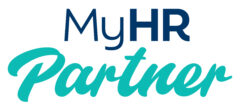Digital nomads.
50-50 hybrid arrangements.
An explosion of co-working spaces.
Remote and hybrid work models have really gained traction over the pandemic years, and even with restrictions easing, many companies and individuals are finding that they don’t really want to go back to the old office model.

Startups in particular tend to embrace the telecommuting trend because many lack a physical office, so hiring remotely is not only practical but a necessity.
If you’re looking at work and management with an old-school mindset, you may be worried about productivity and not having adequate oversight over your employees. But clearly, this business model is working well for a huge number of businesses – so what’s the magic recipe, and how do we need to adapt our view of workplace logistics?
10 years Remote at SaleHoo
At SaleHoo, we’ve been a fully remote team for more than 10 years now. Hiring remote employees makes financial and logistical sense for us and opens us up to a huge global talent pool, without geographical limitations. Frankly, our company would not exist without such a great group of professionals. And since we’re in the business of empowering entrepreneurs to make their own fortune, it makes sense to give our employees the autonomy we’re working to foster in the eCommerce world.
Our staff report higher job satisfaction and produce just as satisfactory results, if not better, as those working out of our local office. The remote work model provides them with greater flexibility to live and work in locations they love and can afford.
Top Challenges and How to Tackle Them
When running a remote team, there are two key things you need to keep in mind: building team camaraderie and task management.
- Team building
When oceans separate your employees, communication and developing that sense of company pride can be challenging. One way we minimize the distance is with our Slack watercooler, which allows all our employees to instant message the entire group. The dialogue is both for fun and for work, so it helps build camaraderie while serving a key business function. - Task management
With miles between you, a hands-on management style is near impossible, so employees must explicitly know what is expected of them. Tasks need to be set clearly and succinctly so that everyone can tackle their workload without needing much immediate guidance. On top of that, several tasks need to be lined up for each person, so that they can work on something else if they do need to wait for feedback from another time zone. We manage our tasks with Asana and complement this with instructional videos on Loom, the combination of which means each employee can work autonomously
Our Top Remote Tools
We use Slack for internal team communication and to maintain our team culture.
Asana is our project and task management software and is used for task-related communications, as well as making sure that everybody always has plenty of work lined up.
Slite hosts our internal Wiki which is invaluable for onboarding and storing and sharing resources for the whole team.
Aside from these and the obligatory email, we use a few other useful apps:
Timezone.io gives an overview of our team and what time they’re currently in,
Clockify tracks project time,
LastPass is for sharing passwords amongst the team and
Loom is useful for communicating visual commentary on projects or tasks.
All of our brand assets and other design files are stored on Canva, but we also use Dropbox, Google Docs and Google Sheets.
If you Want to Dig a Little Deeper
‘Remote: Office Not Required’ by Jason Fried and David Heinemeier Hansson greatly broadened my perspective of telecommuting. It analyzes the challenges and surprising benefits of operating with a remote workforce so after reading it, I felt prepared and comfortable with allowing employees to telecommute. Remote even recommend how to implement the new employment arrangement.



















